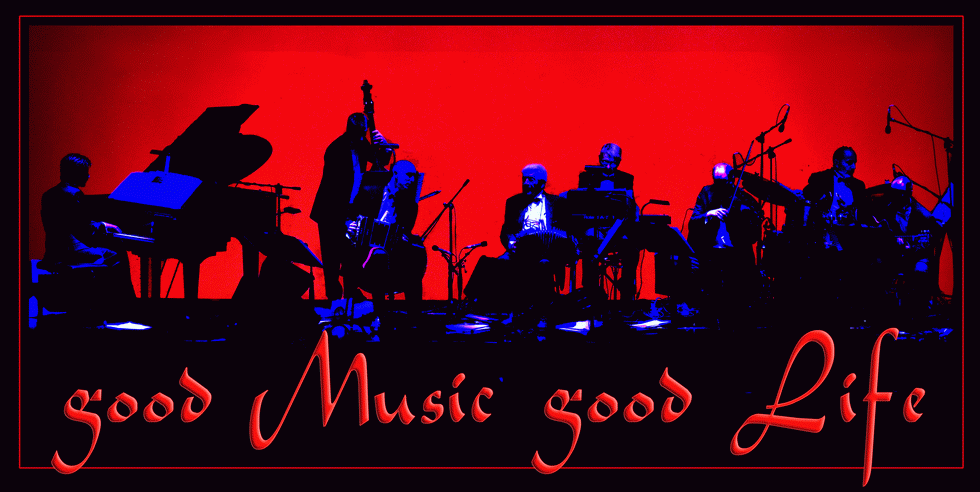Thanassis
Moraitis
He was born at
Vaghia (Kaznesi), a village near Thebes.
He has studied
political sciences at Pantion University, voice and intonation under Popi
Petrioli-Photopoulou, Byzantine music under instructor and master cantor of the
Athens Cathedral Spyros Peristeris; he has chanted under the direction of the
latter from 1983 to 1993 as a regular member of the Athens Cathedral choir. He
has been studying Western music on his own.
Since 1992 he
has been working with Markos Dragoumis at the Melpo Merlier Music Folklore
Archive of the Centre of Asia-Minor Studies, on subjects related to Greek
Demotic and Byzantine music.
Regordings as a singer: During the years 1984-1989
he worked with Mikis Theodorakis, taking part in concerts in Greece and abroad,
as well as in the composer’s recordings: Dionysus (solo album, music and lyrics
by Mikis Theodorakis, first production of Sirius by Manos Hadjidakis,
Sirius-EMI 1985; re-issued in CD form, Minos-EMI 1995 & 2007); Mikis
Theodorakis all time greatest hits –77 songs performed in his world tour
1986-87 (CBS 1986); Faces of the sun (on poetry by Dionyssis Karatzás,
Ioulianos-CBS 1987); Memory of stone (lyrics by Michalis Bourboulis,
Ioulianos-CBS 1987); 30 Years of Mikis Theodorakis (WEA 1989
Read More HERE
Βιογραφικό στα Ελληνικά ΕΔΩ
Dimitris Kotronakis
 Dimitris
Kotronakis was born in Heraklion, Creta (Greece), in 1973. His studies on
classical guitar begun when he was at the age of seven, and were completed
under guidance of Vassilis Kanaras in 1992, when he graduated from the
“International Conservatory of Athens”, obtaining his guitar diploma.
Dimitris
Kotronakis was born in Heraklion, Creta (Greece), in 1973. His studies on
classical guitar begun when he was at the age of seven, and were completed
under guidance of Vassilis Kanaras in 1992, when he graduated from the
“International Conservatory of Athens”, obtaining his guitar diploma.
He attended
post-graduate studies on classical guitar at the “Athens Conservatory”,
graduating again in 1996, under supervision of Costas Cotsiolis.
Meanwhile, he
further expanded his theoretical musical knowledge (obtaining diploma in Fuge,
under tutoring of Giorgos Sioras) and attended Musicology classes (obtaining
diploma from the Musicology branch of the University of Athens, in 1996).
Read More HERE
Βιογραφικό στα Ελληνικά ΕΔΩ
Amsterdam Concerto
The main body of all three movements of this concerto for guitar and string orchestra was written in 2000 in Amsterdam (whence the title), during a concert tour I held in Belgium and the Netherlands as a singer. The composition was completed in Athens in 2001.
The initial intention -kept intact as shown upon completion of the piece- was to compose a bacchanal work, based on the "limp" rhythmic subdivisions of traditional Balkan music at large (5/8, 7/8, 8/8, 11/8 etc.), interspersed with contrasting lyrical coloristic passages. This consideration led to the use of the guitar akin to a melodic percussion instrument.
The nearly minimalistic melodic motif of the first movement (allegro ma non troppo) gets "squeezed" in between recurring rhythmic interpositions of "limp" rhythms, until it gets completed after successive transpositions.
The second movement (andante), immersed in tones of lyricism and melancholy, is dedicated to the grand master of the genre, Joaquin Rodrigo, in the sense that the two wiggling melodic phrases are almost covered up by the three little notes from the second movement (allegro gentile) of the Concierto de Aranjuez.
Following a brief romantic transfigured exposure, nearly the entire duration of the third movement (allegro maestoso) is dominated by the rhythm of 8/8 (4/4, 3+3+2). Persistence in the particular minimalistic melodic phrase pervading all but the entire movement, in association with the 8/8 and with the orchestra's contre-temps, drives the sound mass to an bacchanal culmination. [ThanassisMoraitis]
At first
glance, the writing of the Amsterdam Concerto is not considered particularly
"guitaristic"; the dense texture of the polyphony and the apparent
complexity, place it on the top edge of the guitar technique, making it almost
impossible to be performed. A more cautious approach, however, should be enough
to convince us for its ultimate compatibility with the guitar idiom.
The
comprehension of the character of the instrument is perfect; the composition
exploits a large part of the palette of its technical capabilities. Further
more, it enriches the traditional range of techniques, with particularly
interesting new features.
Not limiting
himself to basic techniques such as linear arpeggios and scales, the composer
uses and enlarges these techniques into a new form, which sometimes reminds us
of Villa Lobos or Leo Brower, (yet without imitating any of them). This is
because Moraitis is not concerned about the convenience of the performer, but
aims at serving and promoting the music.
Simultaneously,
one of the major advantages of his music is the use of the polyphonic
capabilities of the guitar. Unlike many well-known concertos where the
soloist's part could be performed by monophonic instruments, here, extensive
two and three voices parts are scattered all over the concerto.
The guitar
becomes a protagonist of the musical material; it neither accompanies nor
participates as another member of the orchestra; it definitely leads the
development of the music. Breathless, from first to last measure, there are phrases
that could stand out even without the orchestra, as a standalone piece of music
for solo guitar. With three cadenzas at the beginning of all three movements
and at least three other smaller ones, the composer highlights the virtuosic
and timbral possibilities of this instrument.
This is a new
and extremely exciting work, a real challenge for any soloist who dares to
carry out the difficult and demanding passages. It is clearly one of the very
few Greek concertos that are worth of worldwide fame and a place in the
pantheon of music masterpieces of the late 20th century. [Dimitris Kotronakis]
Thanassis Moraitis Amsterdam Concerto - Part I
Thanassis Moraitis Amsterdam Concerto - Part II
Thanassis Moraitis Amsterdam Concerto - Part III
Thanassis
Moraitis-Greek lullaby [Track list]
Thanassis
Moraitis / Tre papor / Arvanitic song from Greece [Track list]






